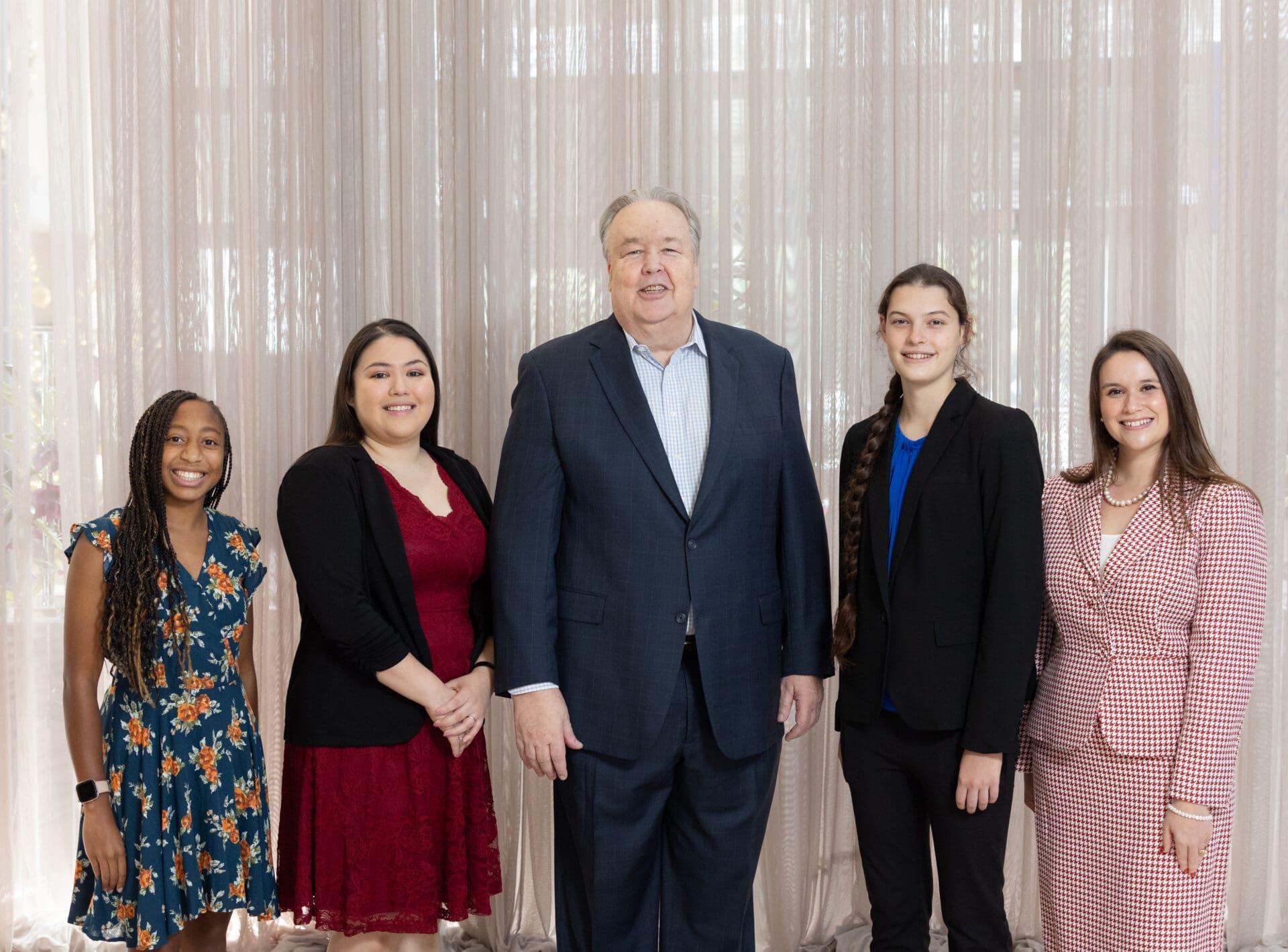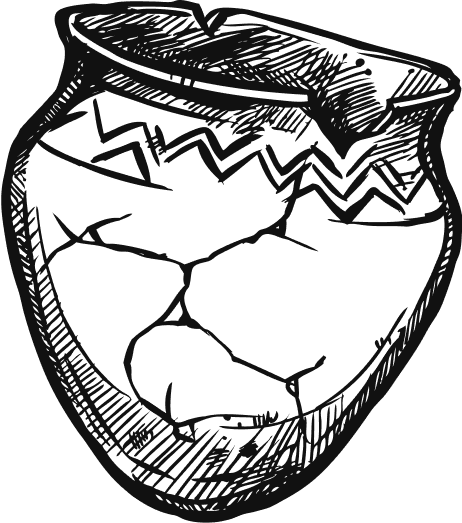Awards & Scholarships

2024 Student Awards
The Evelyn S. Frensley Student Award is given annually in the amount of $2,000 to two high school juniors in the Houston area. Of special interest to the Museum review committee is a description of plans for college and future career and a description of projects or activities that demonstrate ability and interest in science or mathematics.
The application process can be completed by following the STUDENTS APPLY HERE link below.
As part of the award process, applicants are required to submit additional items: 1) two letters of recommendation based on academic merit, 2) a Curriculum Vitae or Resume; 3) your High School transcript, 4) A 500-word or less essay about plans for college and future career, 5) a 500-word or less description of a project or activity that best demonstrates ability and interest in science or mathematics.
To begin the application process, obtain the required documents and be prepared to upload as PDF documents during the online application process.
- PDF files of two letters of recommendation based on academic merit.
- PDF file of a Curriculum Vitae or Resume.
- PDF file of your High School transcript.
- PDF file of a 500-word or less essay about plans for college and future career.
- PDF file of a 500-word or less description of a project or activity that best demonstrates ability and interest in science or mathematics.
Judging Criteria
- Two letters of recommendation. Judges will be looking for unique and specific comments regarding the applicant.
- Curriculum Vitae or Resume. Selection criteria include clarity and format, a range of non-academic interests, long-term dedication to activities and employment or volunteering
- High School transcript. Selection criteria include: grades, electives, and AP or IB credited courses.
- A 500-word or less essay about plans for college and future career. Selection criteria include: realistic, plan of action, connection from past to future, demonstrates original thought, uses correct grammar, spelling, and vocabulary.
- A 500-word or less description of a project or activity that best demonstrates ability and interest in science or mathematics. Selection criteria include: demonstrates ability and interest in science or mathematics, relevance to science or mathematics, effective communication, shows creativity and personality, and uses correct grammar, spelling, and vocabulary.
The deadline for all submissions is September 1, 2024.
2024 Teaching Awards
In recognition of the fine educators of Houston we also offer the Wilhelmina C. Robertson Teaching Excellence Award. This award of $2,000 will go to one K-5th grade science or math teacher and one 6th-12th grade science or math teacher who demonstrate significant ability and dedication to teaching in either discipline in the Houston area.
The application process can be completed by following the TEACHERS APPLY HERE link below.
As part of the award process, applicants are required to submit additional items: 1) Two letters of recommendation showing commitment to science or math education 2) a CV or Resume, 3) a 500 word or less description of your teaching philosophy and 4) a 500 word or less description of a specific classroom activity or teaching method that creates a love of math and science in your students.
To begin the application process, obtain the required documents and be prepared to upload as PDF documents during the online application process.
- PDF files of two letters of recommendation showing commitment to science or math education.
- PDF file of a Curriculum Vitae or Resume.
- PDF file of a 500-word or less description of your teaching philosophy.
- PDF file of a 500-word or less description of a specific classroom activity or teaching method that creates a love of math and science in your students.
Judging Criteria
- Two letters of recommendation. Judges will be looking for unique and specific comments regarding the applicant.
- Curriculum Vitae or Resume. Selection criteria include: clarity, format, higher level degree, continuing education, extracurricular educational projects, and professional memberships.
- 500-word or less description of nominee’s teaching philosophy. Selection criteria include: contemporary student-centered approach, measurable outcomes, differentiation, clarity, and format.
- 500-word or less description of a specific activity or teaching method that creates a love of math and science in your students. Selection criteria include: relevance to science or mathematics, demonstrates principles of science or mathematics, student assessment, and involves student problem solving, decision making, critical thinking, and application.
The deadline for all submissions is September 1, 2024.
2023 Evelyn S. Frensley Outstanding Student Award
Keira Boone, Energy Institute High School
Keira Boone writes, “I’ve been passionate about the environment and engineering throughout my life, and I intend to continue pursuing these interests in college by majoring in climate system science engineering or environmental engineering. I love the challenge of engineering, especially for a problem that has no single solution.” Keira completed a project entitled “Prototype Greens—Lighting a Plant-Powered Spark” in which she used algae to create biofuel. She selected chlorella vulgaris because it grows the fastest, absorbs the most CO2, and thrives in a climate like Houston. To replicate the biofuel conversion process in an at-home accessible manner, she experimented with optimal lighting conditions and made scrap plexiglass into reservoirs for the different stages of conversion and storage, with pathways between the stages crafted from PVC halfpipes. She used a water pump to move the algae to netting-covered trays, then drained the water and dried the algae using sunlight. Keira used a food-grade blender to break down the algae cell walls and then sodium hydroxide and alcohol to chemically separate the biofuel from glycerin. A skim system was used to manually filter the components. Finally, she tested the completed process: grow, dehydrate, blend, convert, filter, and store. Keira writes, “The next thing I knew, I was lighting a flame with homemade biofuel! Not only did I light a flame, but I also sparked my passion for climate science and engineering-based solutions for the challenges facing our world.” Keira Boone attends The Energy Institute High School, an engineering oriented, STEM-focused school in HISD. Keira is a leader in the Robotics Club, member of The Society of Women Engineers, National Honor Society, participant in the Rice University/Climate Justice Museum Program, and winner of the Tesla and Fulcrum Awards at EIHS, among many other accomplishments. She believes she will thrive at a small, STEM-focused, hands-on school offering undergraduate research opportunities like MIT and Caltech. Keira writes, “I want to focus on facilitating the coexistence of renewable energy with humanity and nature in the least disruptive ways possible.”
Tatum Dixon – Clear Horizons Early College High School
Tatum Dixon recently attended the University of Houston Biotechnology Academy, where she participated in a drug discovery research project. Tatum’s team was responsible for determining how best to prevent the influenza virus from spreading throughout the body, by selecting the ligand that would best bind to the neuraminidase receptor responsible for the internal spreading of the virus. The theory is that if a ligand in a drug can bind to the protein neuraminidase before the influenza virus breaks away from it, the influenza virus cannot spread. Her team ran forty ligands through the PyRx Vina Wizard program to determine which would bind best. The PyRx program identified what it believed to be the top three binding ligands. Tatum then used PyMOL software to visualize how these selected ligands would bind to the protein. She concluded that none of these were best suited for binding to neuraminidase, since none of the top three ligands had more than six hydrogen bonds to the protein. Thus, even though the PyRx program predicted ergotamine to be an almost perfect fit for the neuraminidase protein, it was not the best ligand for the job. Tatum writes, “That is why it is important to remember computer programs can still make errors and we should draw some conclusions ourselves. Meanwhile, the actual best fitting ligands, oseltamivir and zanamivir, did not even appear in the top three ligands from PyRx, but have been used in the drugs Tamiflu and Relenza to treat influenza.” Tatum goes on to say, “I thoroughly enjoyed exploring methods to create new drugs for curing certain diseases while doing an in-depth study of proteins. This experience deepened my desire to continue exploring a future in biology.” Tatum Dixon attends Clear Horizons Early College High School in Clear Creek ISD. She takes AP, Honors, and Dual Credit courses and will earn a Natural Science Associate Degree in addition to a high school diploma when she graduates. She is ranked first in her class, plays soccer, and is a member of the National Honor Society, Phi Theta Kappa, and Math Club. Tatum has been awarded with the College Board National African American Recognition, the AP Scholar Award, and Student of the Year. She volunteers at the San Jacinto Food Market and Sanctuary Foster Care, among others. Tatum is interested in attending The University of Houston, University of Houston Clear Lake, or Rice University, and wants to major in biology, biotechnology, microbiology concentration, or biochemistry.
2023 Wilhelmina C. Robertson Teaching Excellence Award
Hailey Burgower – Memorial Parkway Elementary
Hailey Burgower’s teaching philosophy is centered around cultivating curiosity, critical thinking, and collaboration through discourse to develop lifelong learners. She teaches her students at Memorial Parkway Elementary in Katy ISD that “we are one team, and in my classroom, we are one family. I instill in them the expectation to help grow each other.” Ms. Burgower utilizes a hands-on approach and encourages “curiosity and students’ critical thinking skills by further developing their exploration through conversation and practice. Students learn through observations, asking questions, and answering those questions through investigation, which is where most of class time is spent.” Her class was interested in a recent four-day lesson entitled “Burmanji,” in which students studied various parts of ecosystems with interactions between living and nonliving, further developing class discussions about organisms’ roles. The first day consisted of drawing each organism; labeling it as producer, consumer, and decomposer; identifying it as an herbivore, carnivore, or omnivore; and drawing energy arrows to show the flow of energy. Ms. Burgower then rolled dice and the student’s played “Jumanji” with their ecosystem boards. The organisms got diseased and the class discussed how an organism’s decline affects both the organisms from which it receives energy as well as those that depend on it. On day two, the dice were rolled and organisms became overpopulated. On day three, a natural disaster took place and students led a discussion about possible natural events and their impacts. The final day explored what happens when humans alter each ecosystem. Students used critical thinking, analytical skills, and collaboration and made personal connections to the lesson. Ms. Burgower has been recognized as the Rookie Teacher of the Year, as well as Katy ISD District Rookie Teacher. She presented a Professional Development on Classroom Management for the Novice Teacher for the district. She describes herself as a lifelong learner. She spends a lot of time taking science professional development courses. “If I expect my students to learn each day. Then, I must also push myself.” Ms. Burgower further writes, “Overall, I challenge my students to discover the “why” behind each phenomenon in their own words. Relating science to real-world applications and encouraging creativity gives students the confidence they need to succeed.”
Dr. Selene Verhofstad – J. Frank Dobie High School
Dr. Selene Verhofstad writes, “The heart of every great science classroom is its ability to ignite curiosity, foster critical thinking, and embolden students to take ownership of their learning journey.” Dr. Verhofstad has integrated the “Modeling in Chemistry” approach with real-world engineering challenges to provide a holistic science experience for her Early College chemistry students at J. Frank Dobie High School in Pasadena ISD. She explains, “The essence of Modeling Instruction lies in its guided-inquiry approach, meticulously weaving instruction around an evolving storyline of model development….students find themselves at the helm of the scientific process, actively constructing explanations, and defending their conclusions.” Inspired by her curriculum, “Having a Ball with Chemistry and Engineering,” students design a bouncy ball with optimal bounce properties. They use their chemistry knowledge combined with engineering principles to hypothesize and design a prototype bouncy ball using select materials. Students conduct experiments, make observations, record data, present and justify their findings. As they refine their models, Dr. Verhofstad guides them and makes connections to chemical concepts like molecular structure and intermolecular forces. “By allowing students to first grapple with phenomena and then introducing technical terms, the acquisition of knowledge becomes organic and meaningful.” Students then re-evaluate their designs to increase the bounce of their balls. She notes, “This iterative process, intrinsic to both modeling and engineering, reinforces the importance of failure, evaluation, and innovation in the scientific process.” Dr. Verhofstad is an NSF Robert Noyce Master Teacher Fellow at Rice University. She has presented at the Conference for the Advancement of Science Teaching and the Western Regional Noyce Conference. She has also served as a judge for the Science and Engineering Fair of Houston and volunteers for the Science Teachers Association of Texas. She is also an Academic Decathlon coach. Dr. Verhofstad facilitates a student-centered teaching method, expounding that “at the very foundation of my teaching philosophy is the unwavering commitment to setting ambitious expectations for each learner, nurturing their inherent aspirations, and pushing the boundaries of their comprehension….my fervor for science isn’t merely a facet of my personality; it’s a spark I aim to transfer, igniting an enduring flame of enthusiasm in every young mind.”

